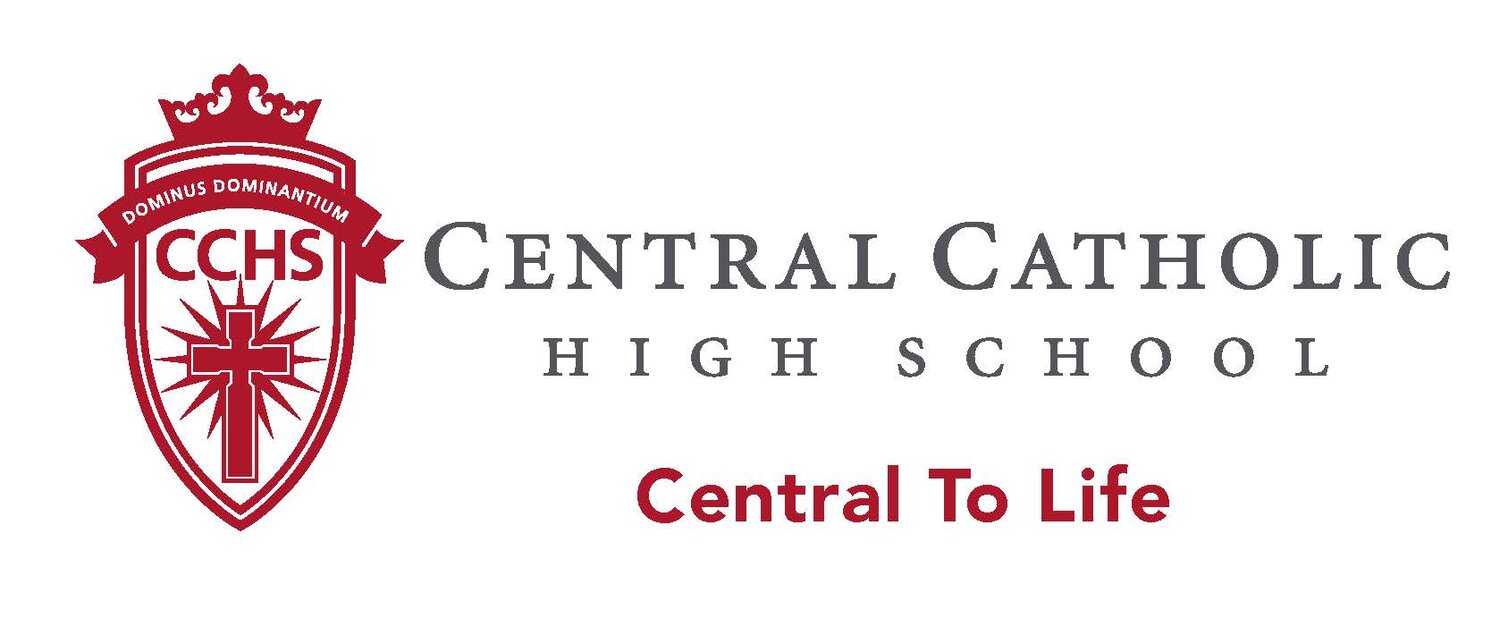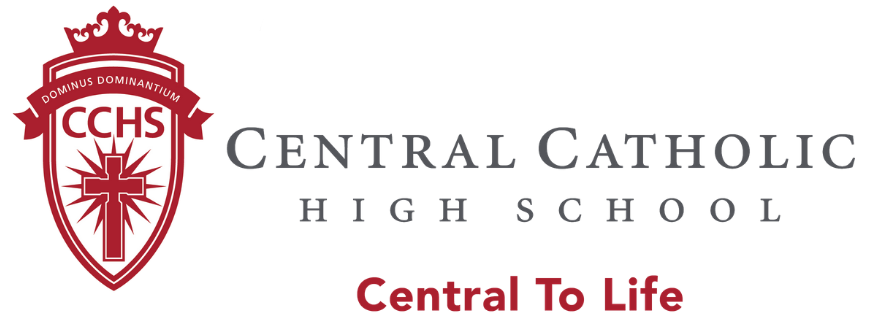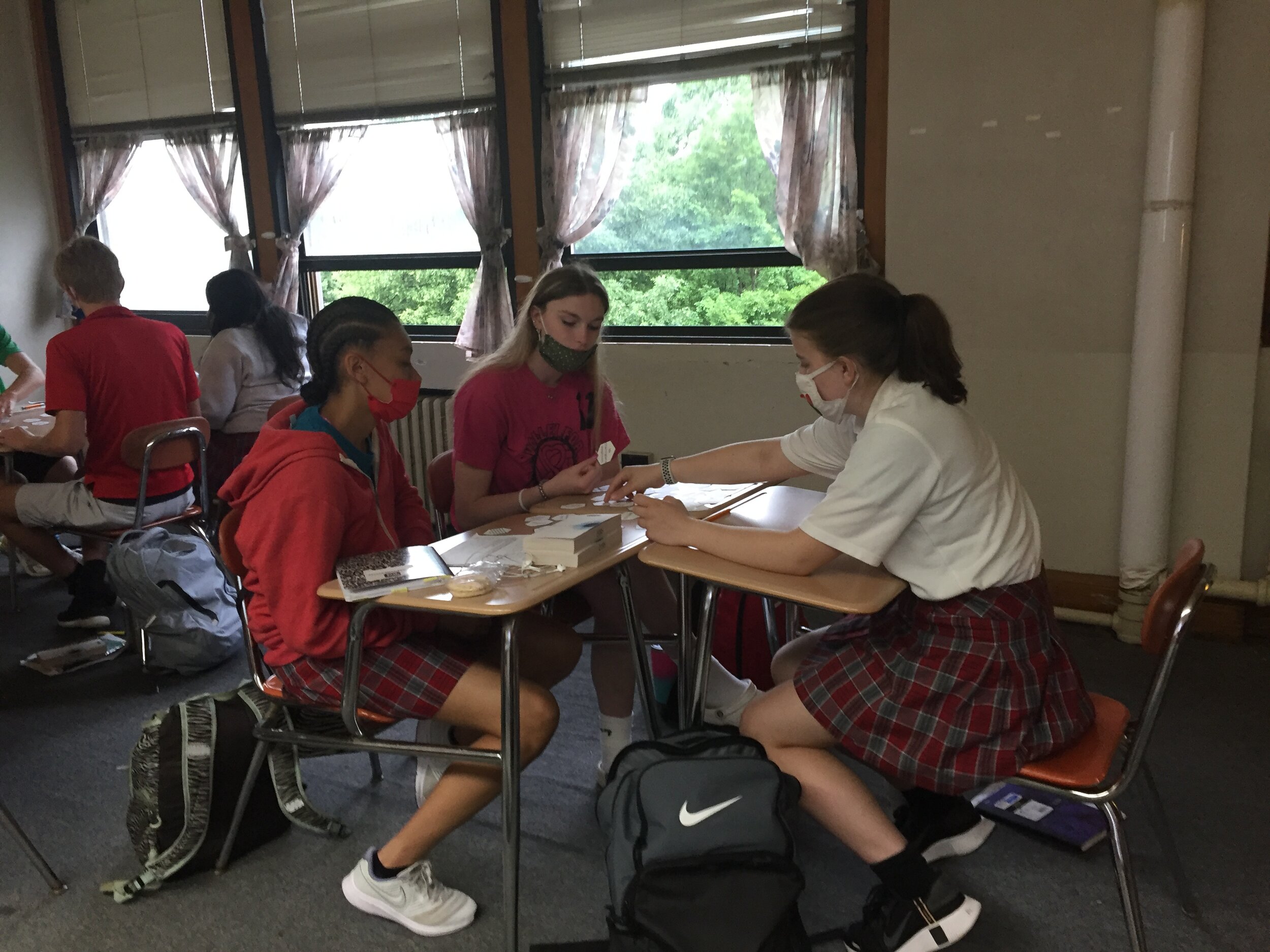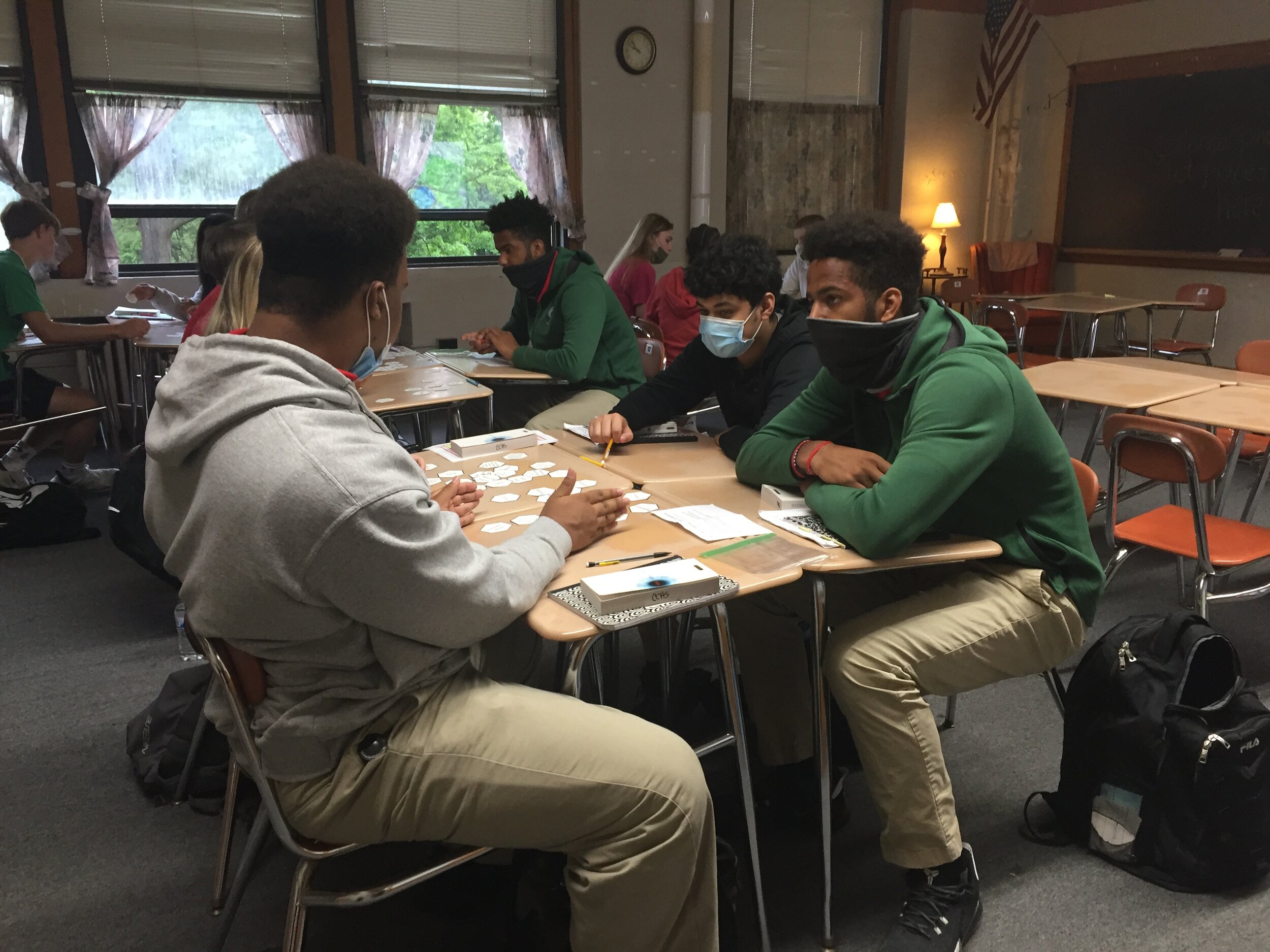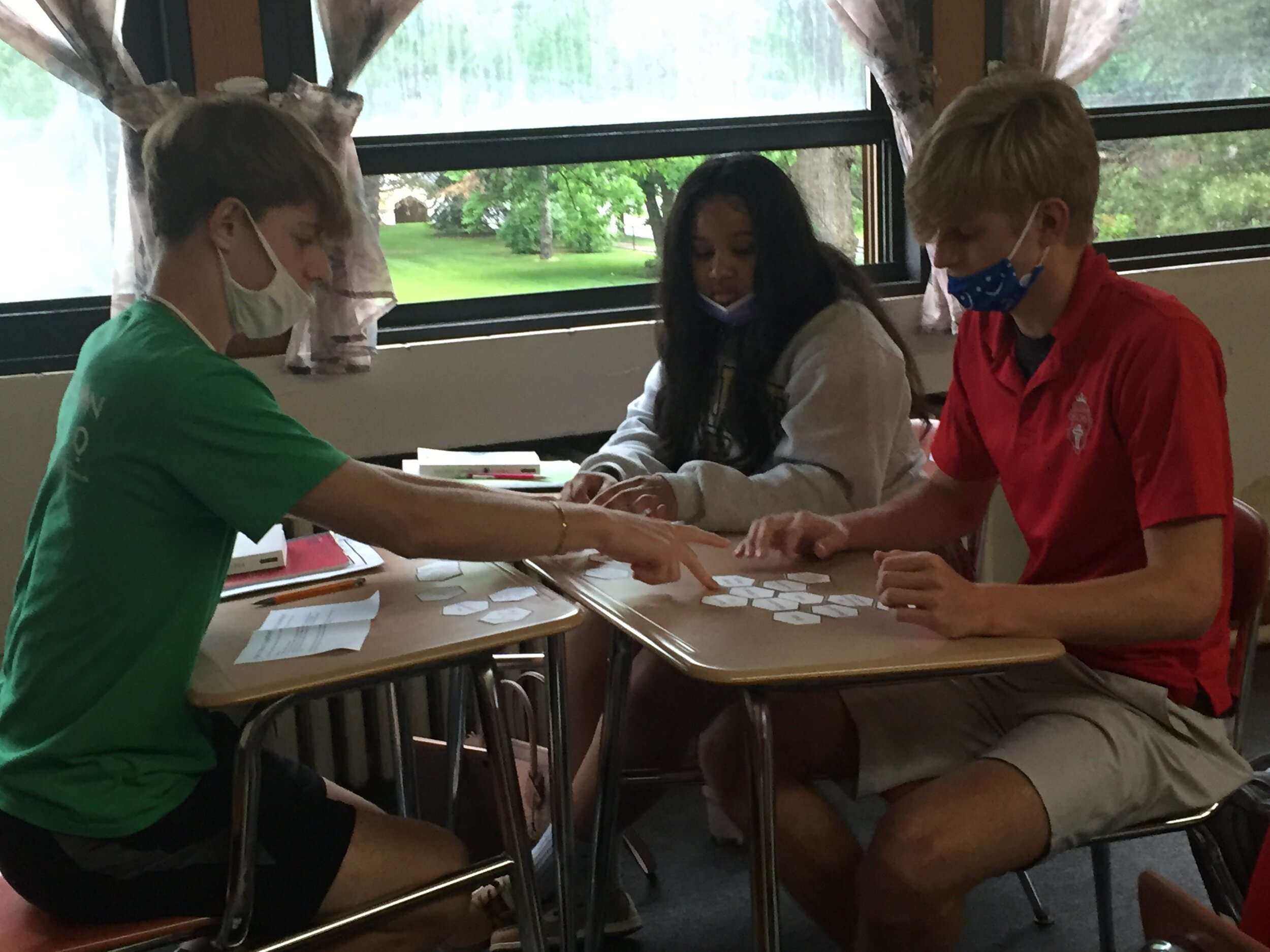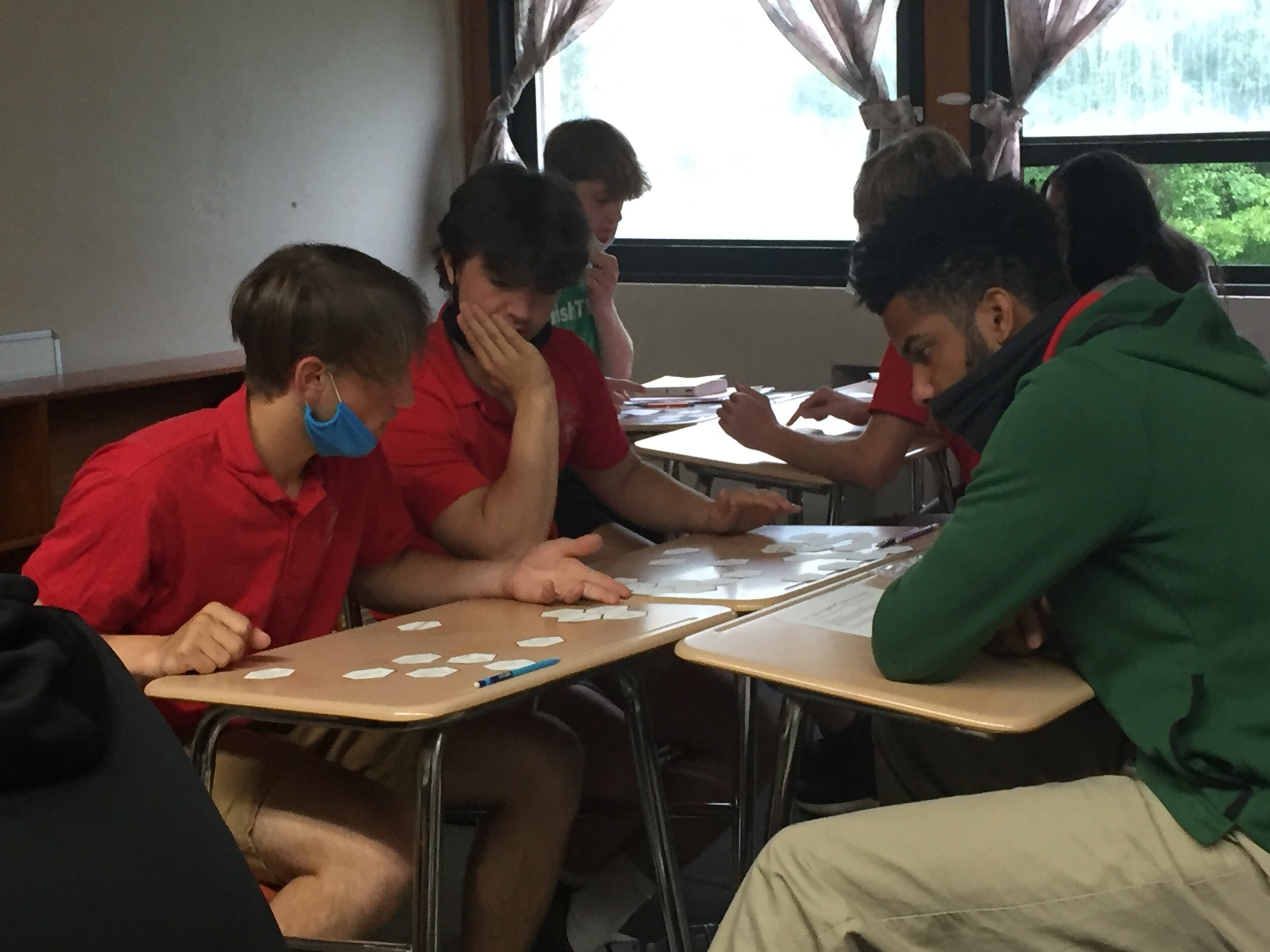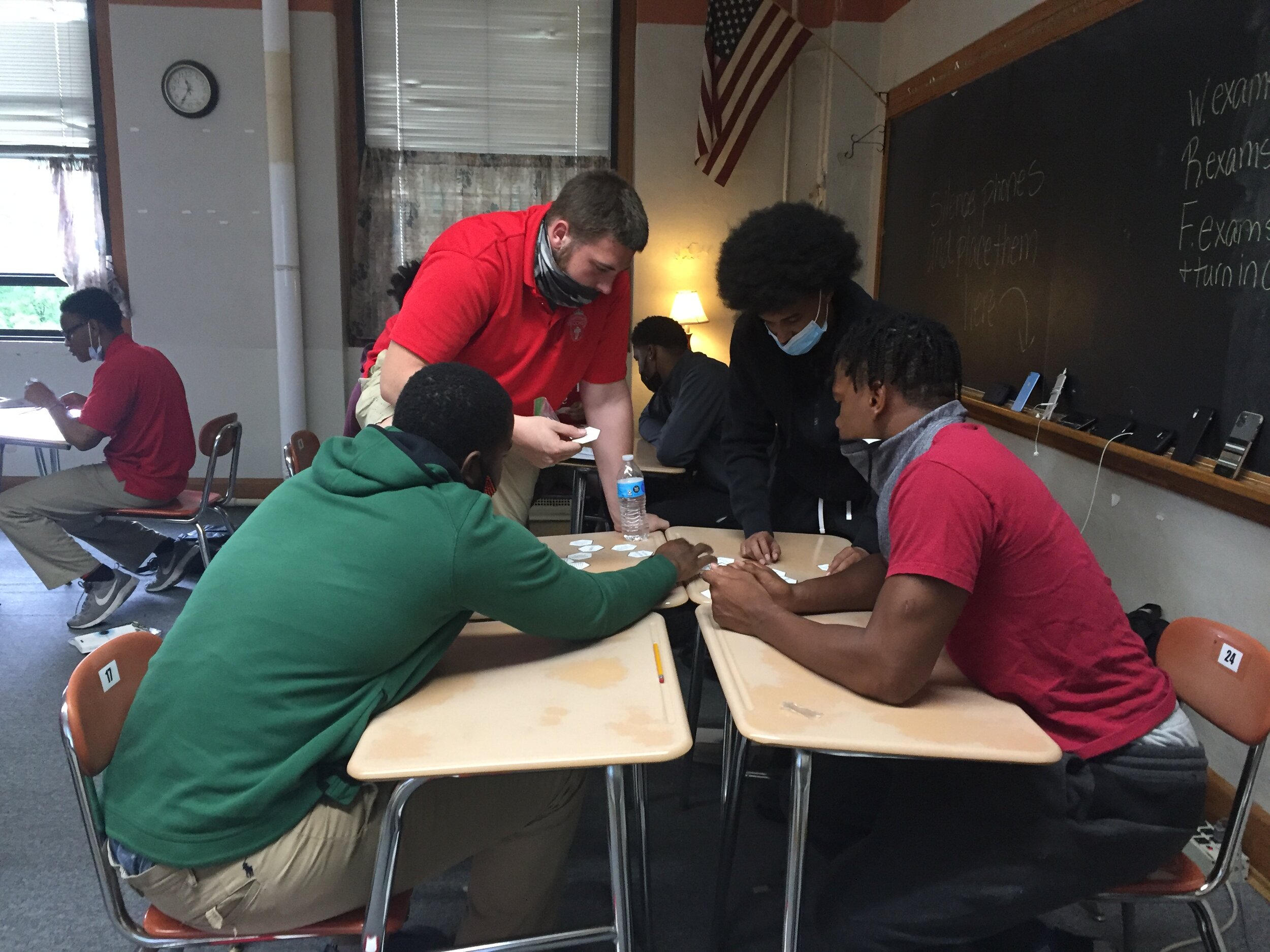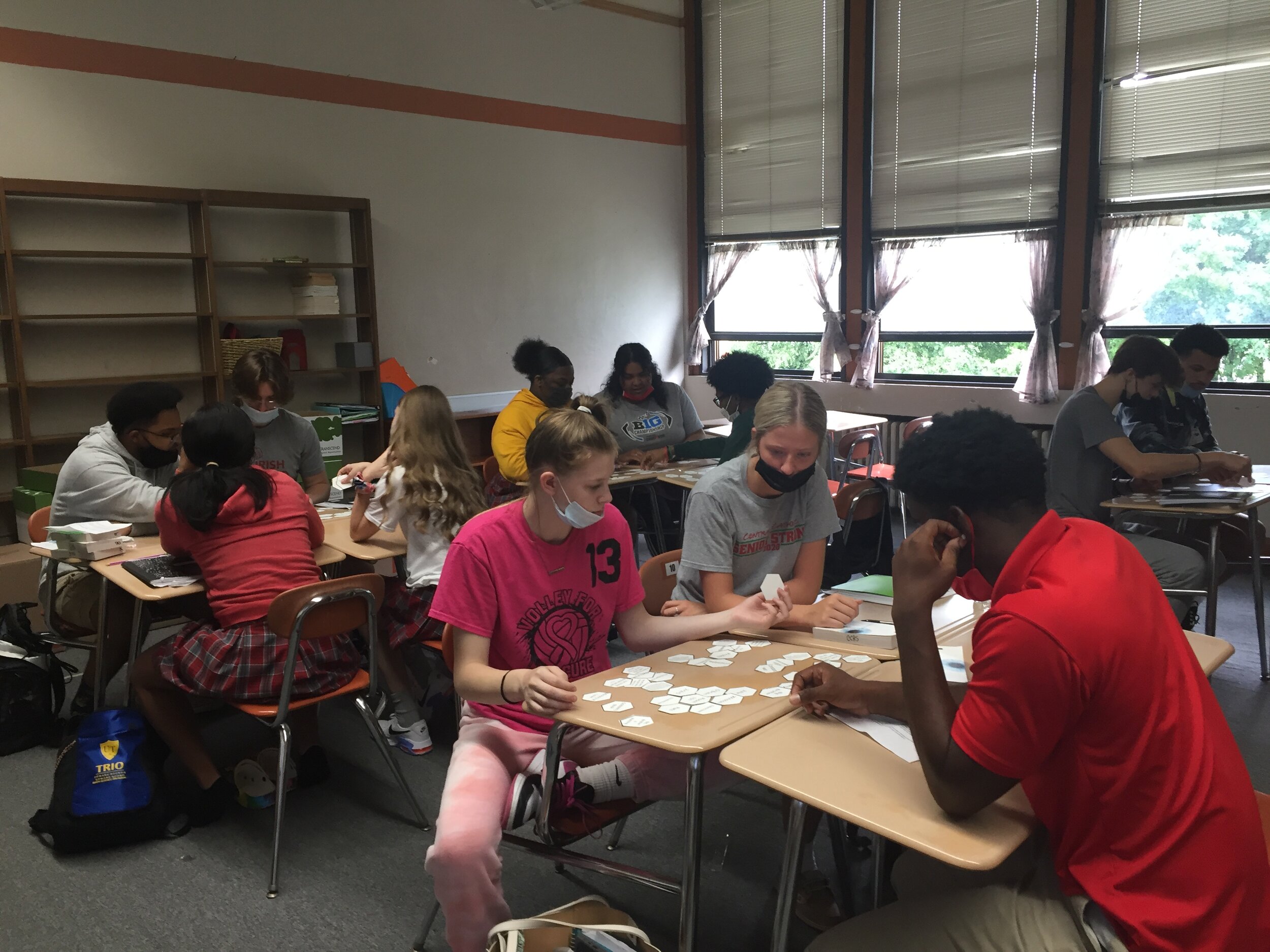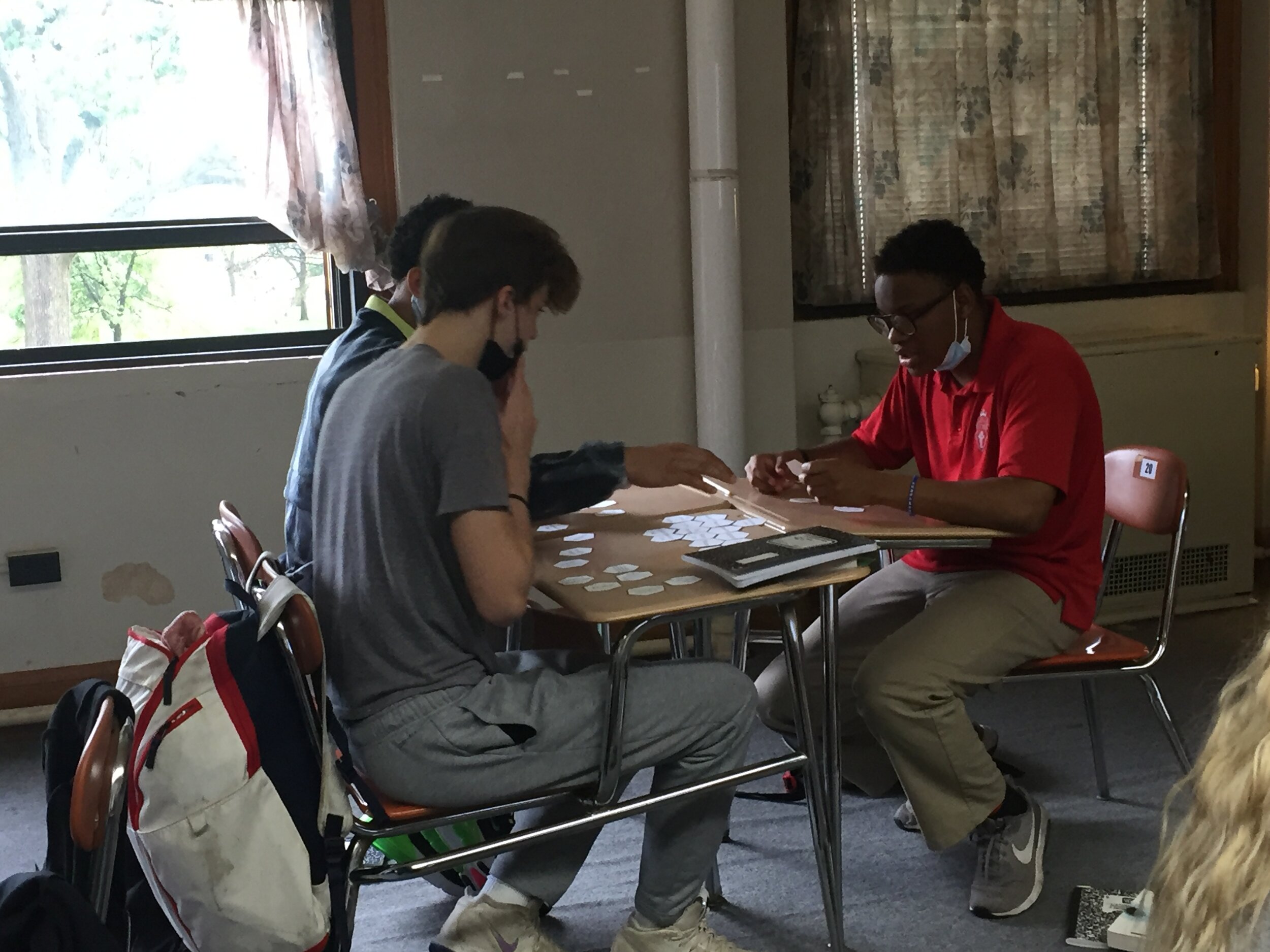CCHS Teacher Thinks Out of the Box for Final Exam
Central Catholic’s junior British Literature students took an alternative type of assessment during exam week. It involved hexagonal thinking and was a kind of collaborative exam that encouraged learning through assessment and flexible thinking. Angela Mills, who teaches English and Drama at Central Catholic High School, had tried hexagonal thinking at the end of a short story during the first semester to see how it would go. Students felt it was a good assessment and said they wanted to do it again.
Students read the book 1984 by George Orwell this quarter. As they worked through it, students took their own notes, created their own discussion questions, and largely worked independently and in groups, with Ms. Mills assisting as a coach and facilitator of discussion. As they got closer to the exam, Ms. Mills realized that hexagonal thinking would be the best way to bring the unit to a close.
“1984 is a deeply complex novel, which was written for a different purpose than simply entertaining its audience,” she explained. “Through critical reading of the novel, one finds that the dystopian society can help us consider the strengths and weaknesses of modern and past government structures, how technology impacts personal privacy, and the impact of propaganda through history. Because of its complexity and relevance, it seemed that students needed a way to demonstrate not only their understanding of 1984, but also their understanding of its relevance and message to a modern audience. Hexagonal thinking allows for students to dive into concepts they know best and feel most strongly about.”
The topics covered on the exam included character names, symbols, events, quotes, topics related to the author's purpose, and locations which appear throughout the novel. These topics were put on hexagon-shaped papers for the students to use. The students worked in small groups for the first 30 minutes of the exam to create one large concept map out of their hexagons. They talked about the hexagons with their group members and placed those which are related side by side until they had created one big map of ideas.
“Even though all students start with the same hexagons, every concept map will be different, as this isn't the type of exam which has one right answer,” said Ms. Mills. “They had to defend their choices in writing for the remaining hour of the exam. Students were allowed to use their notes, the book and any assignments they did during the 1984 unit to help them articulate relationships and connections across the book.”
After students created their concept map as a group, they each chose three connecting hexagons which they felt most strongly about. Students then wrote about the connecting hexagons and defended their ideas as to why they are connected. They needed to use their best academic writing voice, write a strong thesis, be able to recall specific events from the book, and, most importantly, move beyond summarizing to provide evidence of the depth of their understanding of how parts of the book make up the big picture.
Students have reacted positively to taking their exam this way. Ms. Mills said she will do it again in the future based on the feedback from students and the great results she is seeing from those who have taken the exam.
“My hope is that students will take ownership over the knowledge they bring to the table, share it with one another, and ultimately complete an exam they are proud of,” said Ms. Mills. “Learning doesn't have to stop on exam day, and this exam will hopefully be both an assessment of knowledge and an additional learning opportunity.”
